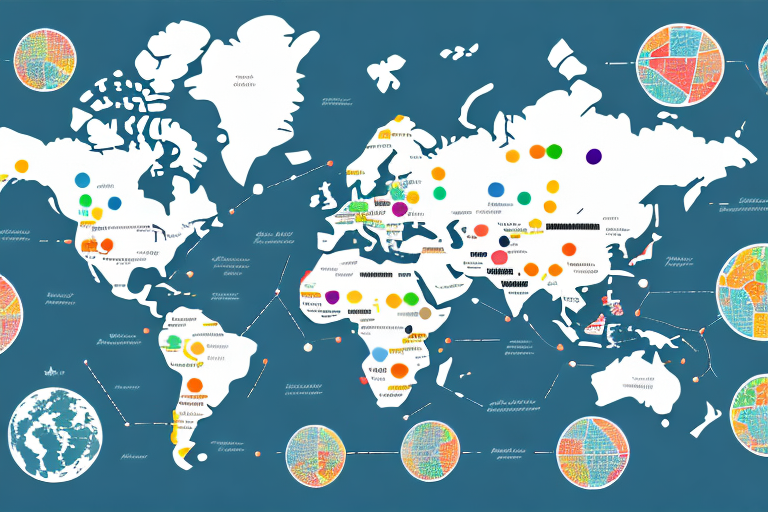In the world of franchising, one critical aspect that must be thoroughly evaluated is the size of the franchise system. The size of a franchise system can have a profound impact on its overall success, growth potential, and the resources available to franchisees. In this comprehensive guide, we will delve into the importance of franchise system size and explore the various factors that should be considered when evaluating it.
Understanding the Importance of Franchise System Size
Franchise system size, often measured by the number of units or locations, plays a vital role in determining the viability and scalability of a franchise. A larger franchise system often signifies a higher degree of brand recognition, consumer trust, and market saturation. It also suggests that the franchisor has successfully developed a replicable business model and possesses the necessary infrastructure to support multiple franchisees.
On the other hand, smaller franchise systems may offer unique advantages, such as a more personalized and hands-on approach from the franchisor, increased flexibility in operations, and a potentially higher return on investment. However, they may also face challenges in terms of resources, brand awareness, and market share.
One of the benefits of being part of a larger franchise system is the potential for economies of scale. With a larger network of franchisees, the franchisor can negotiate better deals with suppliers, resulting in lower costs for the entire system. This can lead to increased profitability for individual franchisees and a competitive advantage in the market.
In addition, a larger franchise system often has a more established support structure in place. This can include dedicated teams for training, marketing, and operations, as well as access to proprietary technology and systems. Franchisees can benefit from the expertise and resources of the franchisor, allowing them to focus on running their business and maximizing their success.
Factors to Consider When Evaluating Franchise System Size
Several factors should be carefully considered when evaluating the size of a franchise system. One crucial factor is the market potential for the product or service offered by the franchise. Assessing the target market’s size, demand, and competition can help determine if the franchise system has room for growth and whether a larger or smaller system would be more suitable.
Another key consideration is the level of support and resources provided by the franchisor. Larger franchise systems tend to have established support structures, such as dedicated training programs, operations manuals, and ongoing assistance, which can be invaluable for new franchisees. In contrast, smaller franchise systems may rely more on the expertise and availability of the franchisor, necessitating a strong personal connection and alignment of goals between franchisor and franchisee.
It is also important to analyze the unique characteristics and requirements of the specific industry or sector in which the franchise operates. Certain industries, such as fast-food chains, often benefit from economies of scale and a larger market presence. Conversely, niche or specialized industries may find that a smaller, more focused franchise system size is better suited to their needs.
Furthermore, the financial implications of franchise system size should be thoroughly evaluated. Larger franchise systems typically require higher initial investments and ongoing fees, which may be prohibitive for some potential franchisees. Alternatively, smaller franchise systems may offer more affordable entry costs but may lack the resources necessary for comprehensive support and marketing efforts.
Additionally, the geographic scope of the franchise system should be taken into account. Some franchise systems may have a national or even international presence, while others may be more localized. The decision on the size of the franchise system should align with the target market and the potential for expansion in different regions. A larger franchise system may have the advantage of brand recognition and economies of scale in multiple locations, while a smaller system may be better suited for a specific geographic area with a concentrated customer base.
The Impact of Franchise System Size on Success and Growth
The size of a franchise system can significantly impact its success and growth potential. A larger franchise system may benefit from economies of scale, allowing for greater purchasing power, shared marketing efforts, and increased brand recognition. Moreover, a larger system is more likely to have a well-established support infrastructure, ensuring consistent operations and quality control.
However, larger franchise systems may face challenges in maintaining strict quality standards across all locations, ensuring effective communication between the franchisor and franchisees, and navigating a highly saturated market. Additionally, rapid growth can sometimes lead to a loss of focus or dilution of the brand, necessitating careful management and ongoing strategic planning.
Smaller franchise systems, on the other hand, often offer greater flexibility, a closer relationship with the franchisor, and the potential for more rapid decision-making and expansion. They may also have niche market appeal, attracting customers seeking unique and specialized products or services. However, smaller systems may lack the same level of resources, brand recognition, and established support mechanisms as their larger counterparts.
Another factor to consider when evaluating the impact of franchise system size on success and growth is the level of competition within the industry. In highly competitive markets, larger franchise systems may have an advantage due to their ability to invest in extensive marketing campaigns, negotiate favorable supplier contracts, and attract top talent. This can help them gain a larger market share and outperform smaller competitors.
On the other hand, smaller franchise systems may find success in niche markets where there is less competition. By offering unique products or services that cater to a specific target audience, they can differentiate themselves and attract loyal customers. This can lead to steady growth and profitability, even without the same level of resources as larger systems.
Ultimately, the impact of franchise system size on success and growth is multifaceted and depends on various factors such as industry dynamics, market conditions, and the specific strategies and capabilities of the franchisor. It is important for potential franchisees to carefully evaluate these factors and consider their own goals and preferences when choosing a franchise system to invest in.







